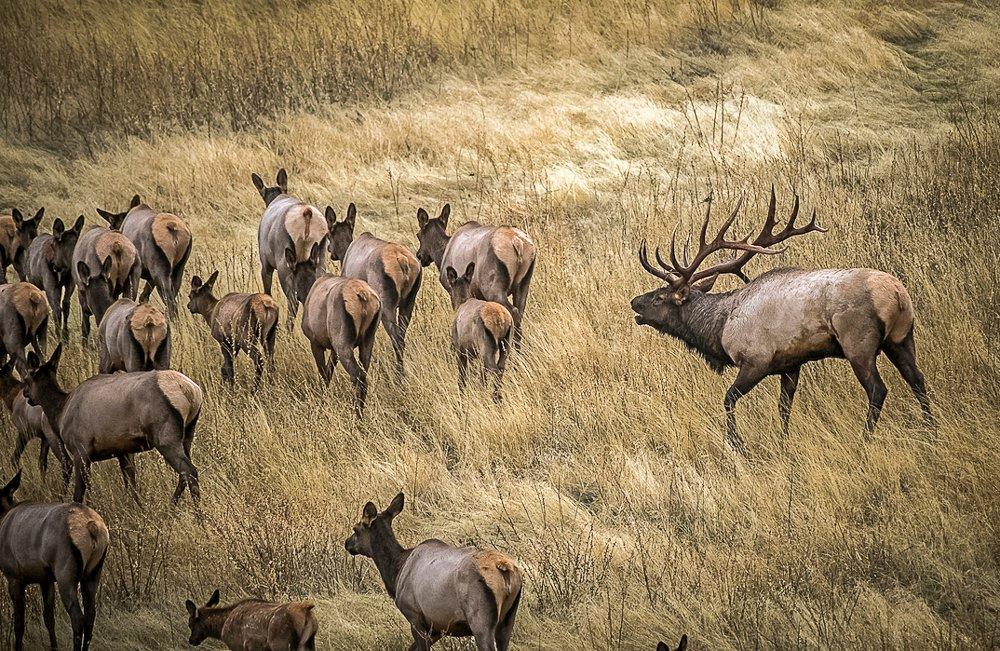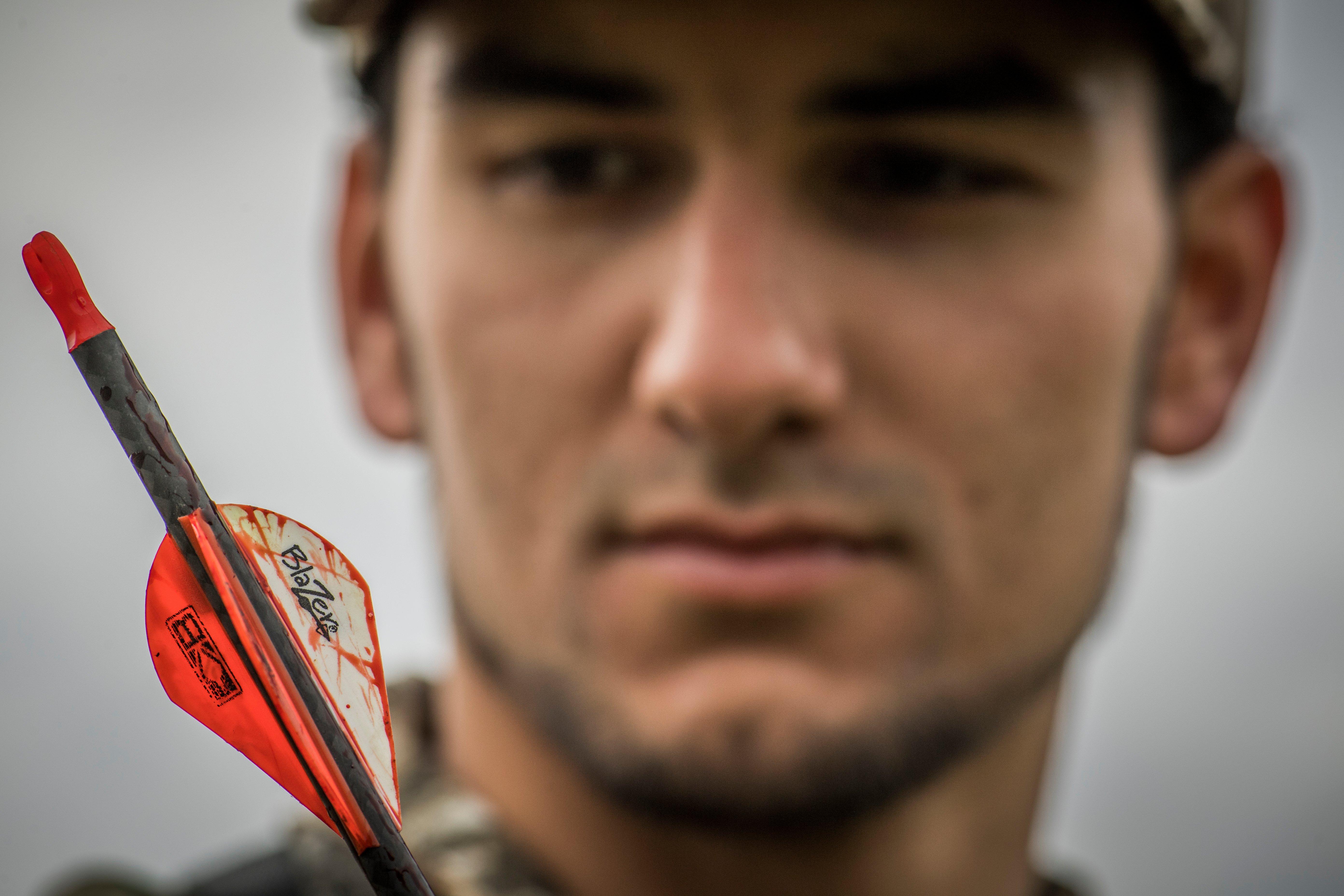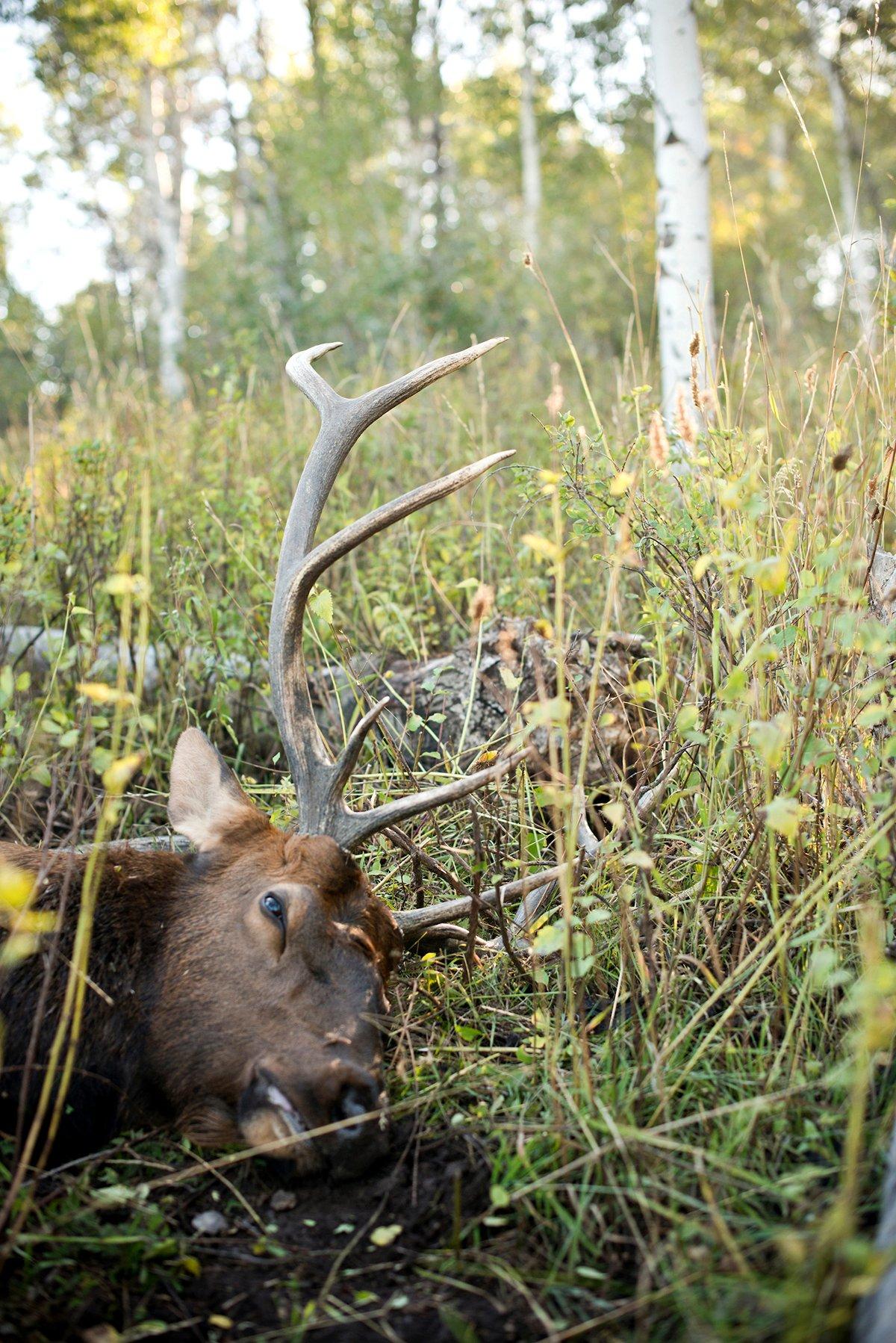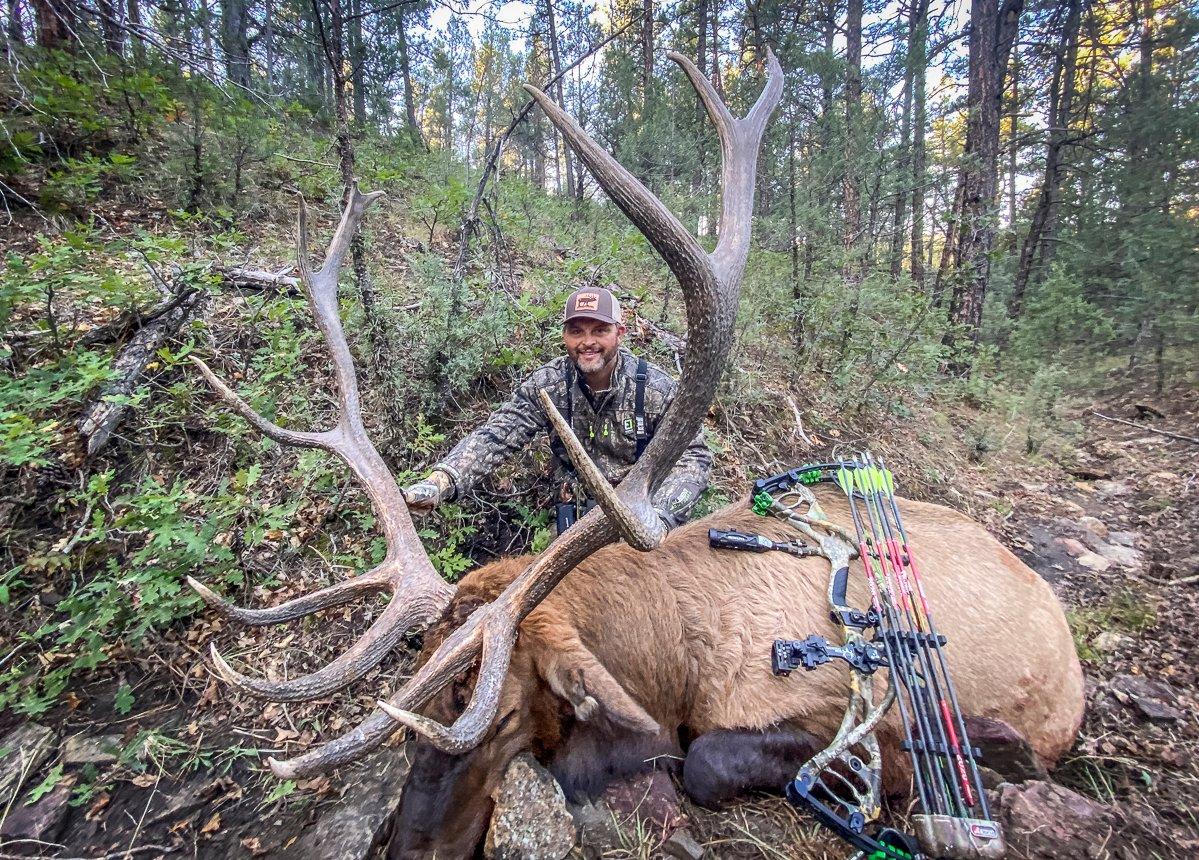Elk are tough, and nothing can ruin a hunt more than failing to find a bull. Put the odds in your favor with this expert advice
Thomas Baumeister studies the splayed-out carcass of a decomposed elk carcass as though it's a crime scene. The outstretched neck points downhill like it's reaching for a finish line, the legs extend uphill, hinting the animal may have slid on its belly, and the location of the carcass itself doesn't look like natural or predator deaths he's seen before. It looks like the elk keeled over in the middle of a dead sprint — possibly injured but trying to keep up with the herd. And some poor hunter wasn't able to track it.
For over 30 years, Baumeister was the education supervisor for Montana Fish, Wildlife & Parks. But he's also an outfitter, addicted to elk hunting, and regarded by some as one of the best shed-antler hunters in big Sky Country, which means he's seen a thing or two when it comes to tracking and recovering elk. Years ago, he shot and nearly lost a bull, but after four days of searching and dozens of miles traveled, he found it, still alive. It had a festered shoulder wound, but was lazily feeding when he closed the deal with a second shot.
There's a common misconception that after a big-game animal is mortally wounded, it wants to take the path of least resistance and travel downhill. That's not universally true.
Baumeister's stories and advice are nothing short of amazing, and educational. But a lot of other hunters aren't so fortunate, and if you hunt long enough, there's a chance you'll encounter an elk-tracking situation that feels like a lost cause. Here are a few things you can do to make sure your next experience ends on a high note.
1. Know Your Weapon
One of the easiest ways to make life difficult is taking imprecise aim on an elk with a weapon that is either untuned or unfamiliar to you. Making a marginal shot instantly increases the chances of losing an animal right out of the gate. The point is while there are numerous ethical dilemmas accompanied with unpreparedness, you've spent countless hours training and scouting, and likely hundreds (thousands?) of dollars for a brief opportunity at harvesting one of the greatest big-game animals alive. Why would you risk it all, and the risk of not recovering your harvest, by not correcting something as simple as your peep sight at the range, or dialing in your scope? Baumeister says one of the best ways to track a wounded elk is making sure you do everything in your power to drop it on the hoof in the first place.
2. Keep Eyes on the Prize
Pay attention to an animal's body language after a shot. Did it appear injured, or take off inside the middle of the herd? Did the wind or weather affect your shot? Did you see blood at any moment? The answers to those questions can help you determine how soon, and how fast, you want to follow up after a shot.
I found that decomposed bull in a drainage while shed hunting this spring. At first, I thought it might have died from natural causes or predation, but the odd thing was the position of the bones on the ground. It appeared to have slid on its chest, and its legs dragged behind almost in a straight line. My guess is it was a wounded animal, trying to keep up, but ultimately ran out of steam, Baumeister says. I've seen wounded bulls mix back into a running herd, and the disrupted ground makes it hard to follow a clean trail, so you can be at a disadvantage if you lose sight of your animal.
(Don't Miss: One Crazy East Kentucky Elk Hunt)
3. Know There Are No Rules
Shot doesn't mean dead. And wounded elk don't always travel downhill. Baumeister agrees there's a common misconception that after a big-game animal is mortally wounded, it wants to take the path of least resistance and travel downhill. That's not universally true. Elk are large, powerful animals, and their instinct is to get away from danger, period. If that means heading up and over a ridge, that's their next waypoint. That's when it's especially important to give the animal as much time as possible to stop, catch its breath, and hopefully expire.
Elk don't make conscious decisions like humans to run one way or another. They simply want to get away from danger, so if that means running uphill to a rock outcropping in the open, that's where they'll go, Baumeister says. It's also why animals sometimes stop to look behind them. They want to see if they escaped the danger, but in the right situations, this can present a follow-up shot.
4. Go Slow
It may sound repetitive, but hunter safety instructors stress patience in every course, and if you give an animal the proper amount of time to expire, and follow the trail slowly, your odds of recovering said animal increase exponentially. Now, how much time after a shot is enough time? That depends. A 30-minute wait is standard, but if you're uncomfortable with your shot, or the animal's body language didn't signal the hit was lethal, give it as much time as possible. If it's last light, don't start tracking until morning, and if the trail offers hints of a gut shot, give it longer.
(Don't Miss: 10 Elk Calling Mistakes That Can Cost You a Bull)
5. Mark Your Trail
It's tough to do in the heat of the moment, but it's important to note a few things after your shot — places like the area of impact, and the last place you have eyes on the animal as it runs away. After you find those locations, mark them somehow. Tying a small piece of orange marking tape to a limb is a common practice. Then as you follow the blood trail, make similar marks every 20 to 30 yards if you can, just to help gauge the animal's general direction of travel. If you lose daylight or the trail gets thin, you'll know where to pick up and start again. After you locate and tag your animal, clean up the tape trail behind you.
6. Hone Your General Tracking Skills
It's frustrating to seemingly make a perfect shot on an elk, but never find a drop of blood. When that occurs, think like a CSI detective, and look for other signs where your animal could've passed. It's an easier prospect in snow compared to following hoof prints in the dirt, but with enough practice, you'll be able to coach yourself along the way. Look for broken branches, kicked dirt, or possibly places where the elk bedded. If your instincts are correct, you may eventually find a blood trail and hopefully, your dead bull.
(Killer Buy Alert: Realtree Camo Mesh Back Pro Staff Richardson Hat)
7. Work in Pairs
You should be paying attention to every detail on the track — but looking up and ahead from time to time and scanning with binoculars might reveal your wounded elk in its bed.
One of the best ways to track is using the buddy system, especially if you or your friend have solid tracking skills, Baumeister says. But limit it to two hunters. A solo tracker doesn't look up enough, and three or more trackers can ruin the trail or spook a wounded animal. Keeping the tracker's head down and following the signs allows the other person to keep their head up, scanning the horizon for clues. Essentially, you're covering both bases.
8. Be Ready to Shoot Again
As a hunter, one of the worst feelings is seeing an animal you thought was dead rise, stand for a moment, and then disappear into the forest, all because there was no plan for a follow-up shot. Proceed with caution on every track, and be ready to shoot again.
I always track with a loaded weapon, and I always take the first possible shot I have in my window, Baumeister says. The goal is to stop the bull in its tracks. The time it takes to nock another arrow or chamber another cartridge may seem miniscule, but you don't want to give a wounded elk even a moment to decide to make another run.
(Don't Miss: Elk Calling Strategies for Today's Public-Land Hunter)
9. Spend Extra Time on Thin Trails
Scattered sign and low light or inclement weather can coerce trackers into hasty decisions. Some speed up their search for other signs, and trample or ruin the trail, or push the animal farther than anyone hopes to travel. Be strategic and reasonable. Leaving the trail and an elk in the woods is a gamble. But the odds of a full and complete recovery are still on your side if you have the mental fortitude to back out, endure a night of no sleep, and return under a new sun.
10. Stay Focused
The longer a trail remains cold, the easier it becomes to throw in the towel. But hang in there. You owe it to the animal to make sure you've done all you can do to recover it, and you might find something at the 11th hour you overlooked earlier. Explore concentric circles around the last sign of blood or ask a friend to help you organize a small search grid.
More often than you might think, wounded big game animals beat the odds and survive, sometimes to be tagged by another hunter, and sometimes to die of old age. You can take solace in that, but only if you've exhausted all the other options. From start to finish, elk hunting is never easy.
(Don't Miss: The Country's Best Elk-Hunting Units)











